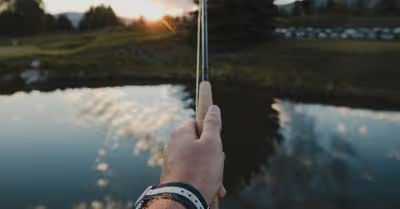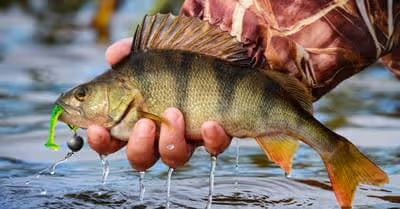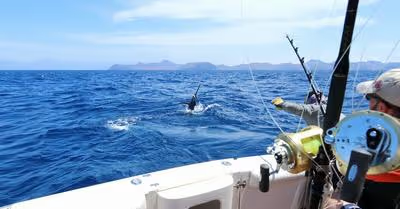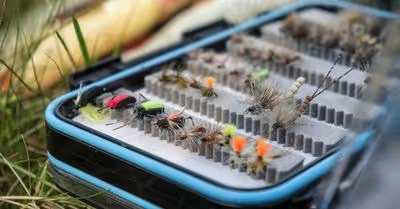Table of Contents
Preparing to Cast a Fly Rod
Before casting your fly fishing rod, it's vital to prepare adequately to increase your chances of incredible success.
Your first task should be to gather the outfit you need for this task. Ensure your gear is balanced to guarantee a compelling fly cast. The line weight, rod weight, and reel weight must be balanced.
Master how to hold the fly rod
Although you can hold the fly rod in various ways, the most important aspect should be a comfortable feel. Most anglers prefer the thumb to be above the cork for average length casts. You should not grip the rod too hard; at the same time, the grip should be relaxed.
How should you hold the line?
If you're a novice in casting a fly rod, the best option would be to start with a very short line. This will help to eliminate any distractions.
Pinch the line onto the cork of the handle using your index finger if you're right-handed. This will help to avoid the line zipping off while casting.
Picking up and loading the rod
You must ensure your line is straight before you and has no bends or slacks on the water. You can only manage an effective cast if you have minimal or no bends or slacks on the line.
As you pick the rod, use a smooth acceleration on the pickup. This will guarantee the effective transfer of energy to load the rod. In simple terms loading your rod refers to transferring energy from the pickup to the back cast. You need to maintain a straight line between the back and forward cast. Again, it needs to be on the same plane and 180 degrees opposite as you make the back and forward cast.
How to Cast a Fly Rod
Casting a fly rod involves a variety of techniques. Typically, the primary cast is the overhead cast; it also serves as the foundation of the other fly casting techniques. After you've mastered this basic cast, the rest becomes much easier to learn.
The Overhead Cast
When learning casting fly rods, the first technique you'll earn is the overhead cast. Besides, it's the technique you'll be using extensively whine fly casting. Although this casting method seems to be simple, it can be challenging to master. Even some of the most experienced anglers encounter hurdles learning how to cast fly rods. If you're a beginner, you must invest adequate time to learn and practice this technique.
The main aim in overhead casting is to get the fly line overhead, then behind you, and finally cast it in front of you to your anticipated target location. If you want to learn this technique fast, you require the appropriate outfit and substantial space, such as an open field.
The overhead cast comprises the back cast and the forward cast. The back cast enables you to load the rod effectively before making the forward cast.
The Back Cast
When making the back cast, you need to follow the following step.
- While standing with your shoulders square, grasp the rod by wrapping your four fingers on the handle. The reel should face downward with the thumb on top. Pull approximately 25 feet of line from the reel and send it to the tip of your rod. Your feet should be width apart as you lay the line straight. Stand square facing your target.
- On a single smooth motion, pick up the rod up and backward. As you start this acceleration, your rod's tip should be low.
- Embark on a deliberate and sudden stop on the acceleration once the rod assumes a vertical position. You have to pause for a moment to allow the line to unroll and rise into the air behind you. When the line is fully extended, you've made a successful back cast.
The Forward Cast
Follow the following step for a compelling forward cast.
- While your line is stretched in the air behind you, with a smooth acceleration stroke, move the rod forward.
- When the rod tip is high, stop to permit the transfer of energy in the line. Then send it forward.
- Lower the rod tip as the line unrolls. The line needs to roll out straight to the fly.
Essential Tips for an Effective Overhead Cast
Your elbow should be close to your body while you maintain your wrist in a straight position. Use your shoulders and biceps to make the cast. You should avoid making the cast using your wrist as it adds irrelevant motion. Besides, it's tiring to use the wrist.
If possible, watch YouTube videos or some photographs to identify where the rod's tip should point besides the right posture to assume when making the cast. You'll also discover when to make the "stops."
When practicing, you may look backward and watch how the line extends. Pause for a sufficient period when making the back cast to ensure the line completely unroll behind you.
Start and end your cast with the line being straight and the rod tip low. As you practice, it's advisable to make a complete cast before attempting the next. Your first trials should be slow.
The overhead cast is ideal for many situations, but it can be tricky if you don't have adequate space behind you. In such a case, you should use the roll cast.
The most appropriate way of learning the overhead cast is by watching it in action.
The Roll Cast
The roll cast is the perfect technique for casting a fly rod when you have limited space behind you. It's also ideal if you're experiencing strong winds at your back. This method is mostly used by anglers while fishing in streams or creeks. You can also employ it when fishing in slender waterways.
This technique lets the line to unroll smoothly over the surface of the water. It also presents a minimal likelihood of disturbing fish in the water. Although it's somewhat complicated to perform compared to the overhead cast, you can learn it with consistent practice. When the line is on the water, it's anchored, allowing you to make a loop.
How to Accomplish the Roll Cast
- Drag the line across the water by drawing the rod up and back. Begin by laying about 25 feet of line in front of you in the water. Let the tip of the rod point to the surface. Via a smooth and slow motion, get the rod back, and drag it over the water. Take care to avoid pulling the line out of the water. It's the friction of the water and the line that loads the rod and permits you to cast its forward.
- You need to stop the stroke when a loop forms behind you. When the rod gets slightly past the vertical position, stop and grasp it in place. If your stroke was as required, the tip of the rod should droop and slack, resulting in a loop. A large loop means you'll generate enough energy to cast the line forward.
- Move the rod forward quickly. After creating the loop via your backward motion, suddenly, move the rod forward to begin the forward cast. The rod should remain pointed while keeping your hand high. At this point, the line will begin rolling over the surface of the water towards your cast. Accelerate forward through a consistent and smooth movement instead of a short and erratic motion.
- Complete your cast by stopping suddenly to let the line unroll. You should stop the cast when it's almost parallel with the water. The loop will roll out of the water to the exact area you're planning to make the cast. The end of the line should land gently on the surface of the water.
Practice! Practice! Practice!
Like any other technique, fly rod casting takes time, commitment, and dedication to succeed. If you commit to practicing frequently, you'll master the techniques in no time. For example, you can spend 15-30 minutes practicing in your yard before setting out to perform it in the water.
This will assist in perfecting your stroke and developing the right muscle memory for an incredible cast. Once you've mastered these fly fishing techniques, you're good to go fishing in whichever situation. Start with the overhead casting technique before advancing to roll cast.
Recent Articles
















